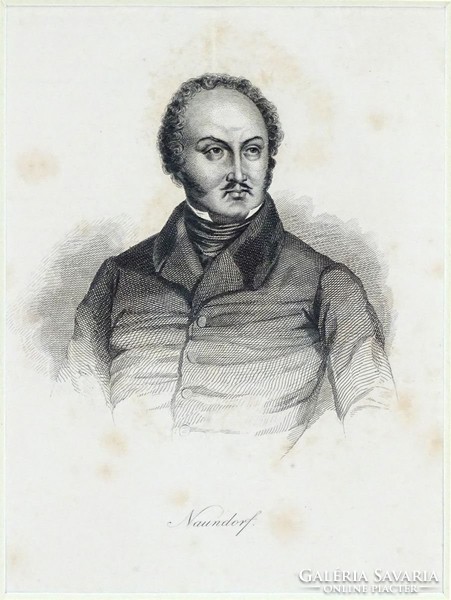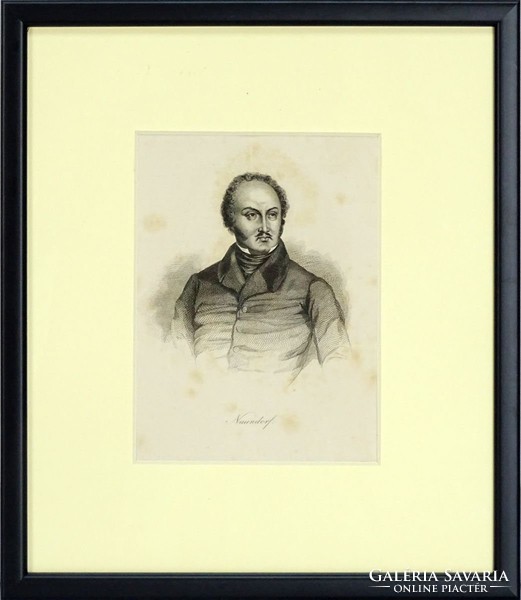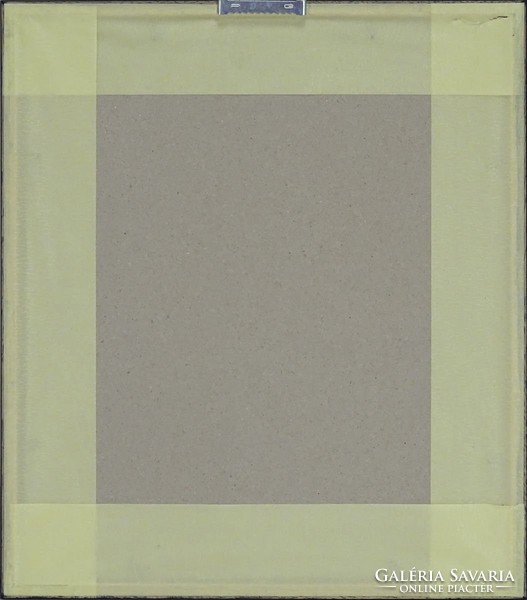0I873 Antik acélmetszet NAUNDORF
| Feltöltés ideje: 2023. december 04. |
| Termékkód: 1365852 |
| Megtekintések: 96 |
| Megfigyelők: 0 |
| Ajánlatok: 0 ajánlat |
antikvitasok (3013)
![]() BUDAPEST
BUDAPEST
Hitelesített felhasználó
Tudja meg, milyen lépésekkel tesszük biztonságosabbá és kényelmesebbé online piacterünk használatát. Részletek
| Téma: | portré |
| Eredetiség: | eredeti |
Szépen keretezett, paszpartuban és üveglap mögött található hibátlan, ajándékozható állapotban lévő jelzett acélmetszet portré.
A képen látható személy:
KARL WILHELM NAUNDORF
Szélesség: 27 cm
Magasság: 31 cm
Súly: 0.62 kg
Portré mérete: 13 x 16,5 cm.
Karl Wilhelm Naundorff
From Wikipedia, the free encyclopedia
This article needs additional citations for verification. Please help improve this article by adding citations to reliable sources. Unsourced material may be challenged and removed. (June 2007) (Learn how and when to remove this template message)
Karl Wilhelm Naundorff (1785? – August 10, 1845) was a German clock- and watch-maker who until his death claimed to be Prince Louis-Charles, or Louis XVII of France. Naundorff was one of the more stubborn of more than thirty men who claimed to be Louis XVII.
Contents- 1 Biography
- 1.1 Impersonation
- 1.2 Legacy and continued controversy
- 2 References
- 3 External links
Biography
Prince Louis-Charles, the son of Louis XVI and Marie Antoinette, was imprisoned during the French Revolution and believed to have died in prison. However, there were various rumors that monarchist sympathizers had spirited the young dauphin away from the Temple prison and that he was living elsewhere in secret.
The first records of Karl Wilhelm Naundorff are from 1810 in Spandau, Berlin, where he received the citizenship of Prussia. By 1822 he had moved to live with a family in Brandenburg-on-the-Havel where he was later accused of arson and 1824 was jailed for three years for counterfeiting.
Impersonation
When he was released in 1827, he moved to Crossen and wrote the first of two books of would-be-memoirs. The second he wrote in England many years later and was translated to English by Charles G. Perceval, Rector of Calverton, Buckinghamshire, and nephew of Spencer Perceval. He claimed that he had been substituted with a deaf and mute orphan who died soon afterward and that he had been hidden in a secret area of the Tower of the Temple until his escape. He also claimed that he was later recaptured by Napoleon's forces and secretly kept in several dungeons throughout Europe until finally escaping in his mid-twenties. He could present no proof of any of this.
In 1833, Naundorff travelled to Paris where another claimant to the French throne, the Duke of Richemont, was on trial. One of the witnesses for the prosecution read out his letter as a counterclaim.
Despite the fact that Naundorff did not speak French very well, he managed to convince various former members of the Louis XVI's court that he was the Dauphin. He seemed to know everything about the private life of the royal court, gave right answers to most questions and spoke to courtiers as if he had known them as a child. One of them was Agathe de Rambaud, Louis' childhood nurse who accepted him. Others who claimed to have recognized him as the prince include Étienne de Joly, King Louis XVI's Minister of Justice, and Jean Bremond, the king's personal secretary.
However, Princess Marie-Thérèse, the sister of Prince Louis, did not acknowledge him. She had seen pictures of him, claimed she did not see any resemblance to her brother and refused even to see him despite having seen other claimants who were not represented by former members of the royal court. On one occasion Agathe de Rambaud travelled to Prague by carriage to persuade her but to no avail as the princess refused to see her as well.
In 1836, Naundorff sued Marie Thérèse for property that supposedly belonged to him. Instead, the police force of king Louis-Philippe arrested him, seized all his papers and deported him to England. There he worked to develop several military inventions, including an early grenade, and a recoilless rifle which he eventually sold to the Dutch Military. He declared that he would be restored to the throne on January 1, 1840. When that date passed, he lost the majority of his supporters.
Legacy and continued controversy
Naundorff died on August 10, 1845 in Delft, the Netherlands, possibly of poisoning. He had been living there with his family after being made Director of Pyrotechnics for the Dutch Military. He still had some supporters because the epitaph on his grave reads "Here lies Louis XVII, King of France" and in his death certificate he is named as "Charles-Louis de Bourbon, Duke of Normandy (Louis XVII), who was known under the name of Charles-Guillaume Naundorff, [...] son of His Majesty the late Louis XVI, King of France and of Her Imperial and Royal Highness Marie Antoinette, Archduchess of Austria, Queen of France, who both died in Paris".[1] France has insisted this document be set aside but the Netherlands has refused.[citation needed]
Naundorff's descendants did not give up. Some of them insisted on using the surname "de Bourbon" and they petitioned for recognition to French courts and senates all through the 19th and 20th centuries. Circus director René Charles "de Bourbon," an illegitimate son of one of Naundorff's grandchildren, lost his claim in a French court in 1954. However, some of the descendants still press the claim.
A handful of French historians insist that DNA testing finally resolved the issue of Naundorff's claim; mitochondrial DNA sequences of remains that researchers have claimed to have belonged to Naundorff were compared with sequences obtained from the remains of Marie-Antoinette and two of her sisters and two living maternal relatives. They argue that differences in the nucleotide sequences make it very unlikely that Naundorff was the son of Marie-Antoinette. A group of his descendants disagree that the remains are those of Naundorff and are independently continuing the investigation.[2]
References
(Dutch) Death certificate- Jehaes, E.; Decorte, R.; Peneau, A.; Petrie, J.H.; Boiry, P.A.; Gilissen, A.; Moisan, J.P.; Van den Berghe, H.; Pascal, O.; Cassiman, J.J. (July 1998). "Mitochondrial DNA analysis on remains of a putative son of Louis XVI, King of France and Marie-Antoinette" (PDF). European Journal of Human Genetics. 6 (4): 383–395. doi:10.1038/sj.ejhg.5200227. PMID 9781047. Retrieved 2007-01-20. Cite uses deprecated parameter |coauthors= (help)
External links
- Website for The Fondation de Bourbon (English)
- Website for Naundorff, whose family is still trying to press through his claim (French)
- Using mtDNA to track the case of Louis XVII, son of Marie Antoinette
- a DNA Ancestory Website with some information regarding the DNA testing results (English)
Forrás: en.wikipedia.org
Garanciális feltételek
| Garancia: örökös |
Fizetési opciók
| Banki előre utalás |
| Készpénz |
| Postai utánvétel |
| PayPal |
Szállítási opciók
| Szállítás innen: Magyarország Feldolgozási idő: 1-2 munkanap A feldolgozási idő megmutatja, hogy az eladónak a fizetéstől számítva mennyi időre van szüksége a tárgy becsomagolásához és feladásához. Ez alapján tájékozódhat a vevő, hogy a fizetést követően mikor várhatja a csomag feladását. | |
| Személyes átvétel | Budapest IX. |
| MPL - csomagautomata | 1650 HUF |
| MPL - házhozszállítás | 1800 HUF |
| PostaPont | 1650 HUF |




